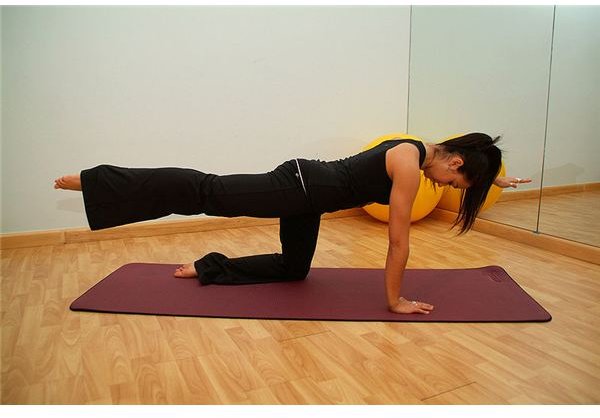Osteoporosis Exercises for Older Women: An Insight on the Best Exercises to Prevent Osteoporosis in Older Women
Osteoporosis is a type of bone disease that usually affects women in their 50s, or those in the menopausal stage. This disease is caused by the body’s inability to form new bones. A deficiency in calcium and phosphate can lead to osteoporosis in women. With age, calcium and phosphate are reabsorbed back into the body. If one does not get enough supply of these minerals, the bones tend to become brittle and fragile, increasing the likelihood of fracture or injury.
Medication and hormone replacement therapy (HRT) are some forms of treatment for osteoporosis. Aside from these, diet and exercise can support fast recovery from osteoporosis; these can also prevent bone disease among women who do not show symptoms, or those who are in the early stage of the disease. Here are some osteoporosis exercises for older women, as well as some tips on how one can benefit greatly from these exercises.
Weight-Bearing Exercises
These are exercises that require people to be on their feet, and where gravity is exerting a force. Walking, jogging, dancing, climbing up and down the stairs, weight training and playing sports such as tennis, handball, volleyball and basketball are some examples of weight-bearing exercises. It is best to try an activity with a strain level that is neither too low, as this can only inhibit the bones from getting stronger, nor too high, as this can cause an injury. Performing routines or tasks that are new to the body will bring benefits as the body adjusts to an activity that has a variety of forces and loads.
High-impact activities include aerobics, jumping and running provide more positive effects on the bones, as these can quickly improve bone strength. Not everyone can perform such activities, particularly those who have joint problems or other medical conditions. For unfit or inactive people, starting with a low-intensity exercise, such as walking or jogging, is advisable before increasing the intensity of activity.
Certain everyday activities can also improve muscle strength such as walking some of the way to work, using the stairs instead of the lift, and including some exercise while walking.
Resistance Exercises

Also referred to as strength training, resistance exercises provide a good effect on bone strength, as well as reducing the number of falls among older people. Bones are strengthened as bone mass increases, and this occurs when the bones feel a strain due to some activities such as weight lifting. Targeting specific areas of the body (spine, arms, hip) while lifting weights is a good idea to promote bone strength in those important areas.
Resistance exercises are helpful in increasing the bone mass, as compared to everyday activities. By increasing the resistance, number of repetitions and doing a variety of activities, the bones feel a new kind of strain that is necessary for obtaining bone strength.
Balance Exercises

Tai chi and yoga are good balance exercises for those with osteoporosis. These exercises promote balance, flexibility, as well as strength of muscles. A collapsed or poor posture often results to compression in the chest and shallow breathing. These symptoms limit the amount of oxygen that the body’s cells receive, often resulting to cardiovascular diseases and other medical conditions. Yoga counters the shortening and rounding of the spine, which are the visible signs of osteoporosis.
Several yoga poses help to strengthen the arms, wrists, and hands such as the headstand, angle headstand, elbow balance, downward-facing dog. These inverted weight-bearing poses prevent problems related to a weak skeletal structures by strengthening the arms, upper body and upper spine. In addition to these, yoga helps a person become more relaxed. Stress makes one acidic, which in time removes calcium from the bones. Relaxation prevents acidity in the blood, thus enabling calcium to remain in the bones.
Although there are medications effective in treating osteoporosis, obtaining a healthy lifestyle through diet and exercise can provide benefits for the prevention of this type of bone disease. However, it is advisable to consult a health care provider before engaging in an exercise program to prevent serious health problems.
Resources
Preventing Osteoporosis, https://www.osteoporosis.org.au/osteo_prevention_exercise.php
Osteoporosis, https://www.nlm.nih.gov/medlineplus/ency/article/000360.htm
Photo Credit: Wikimedia Commons/suzanne88
